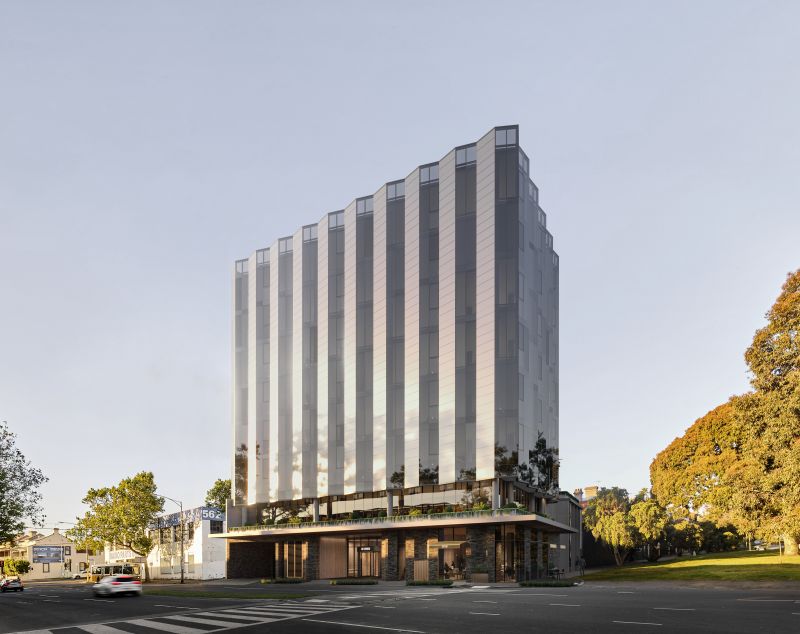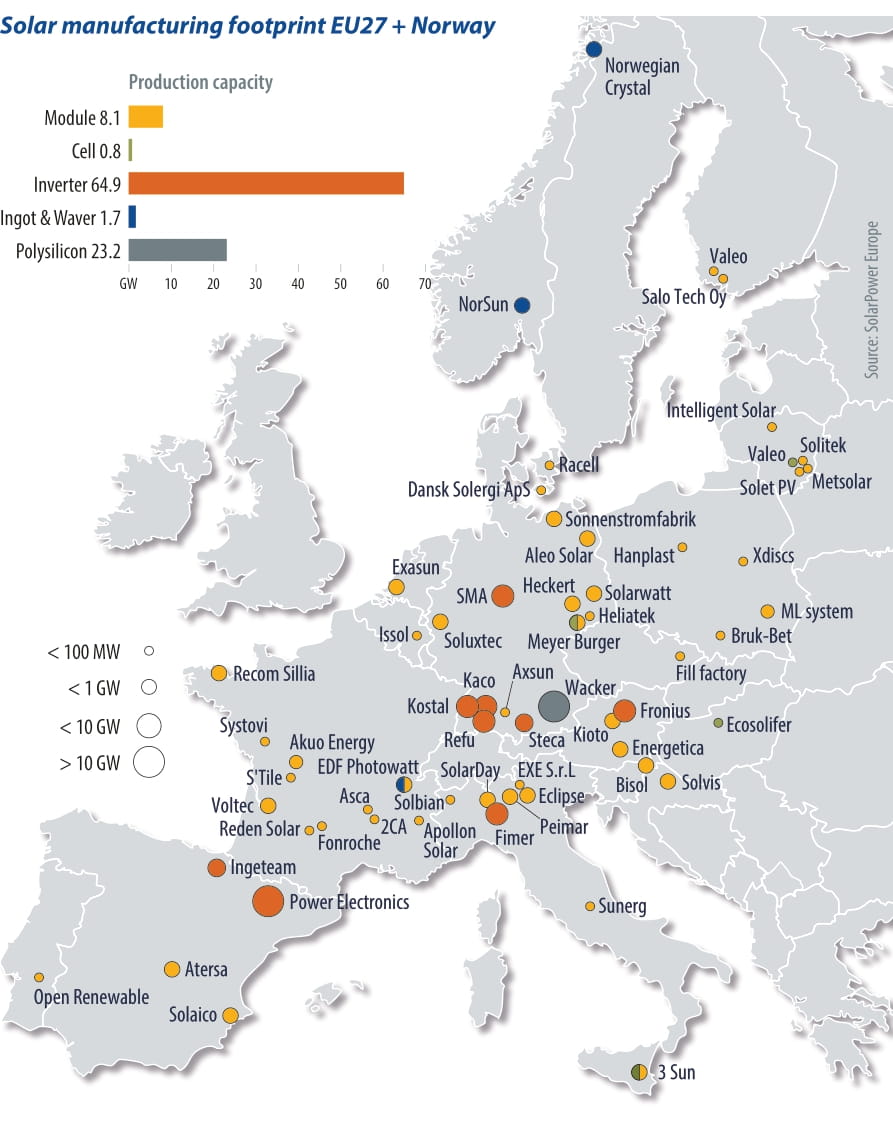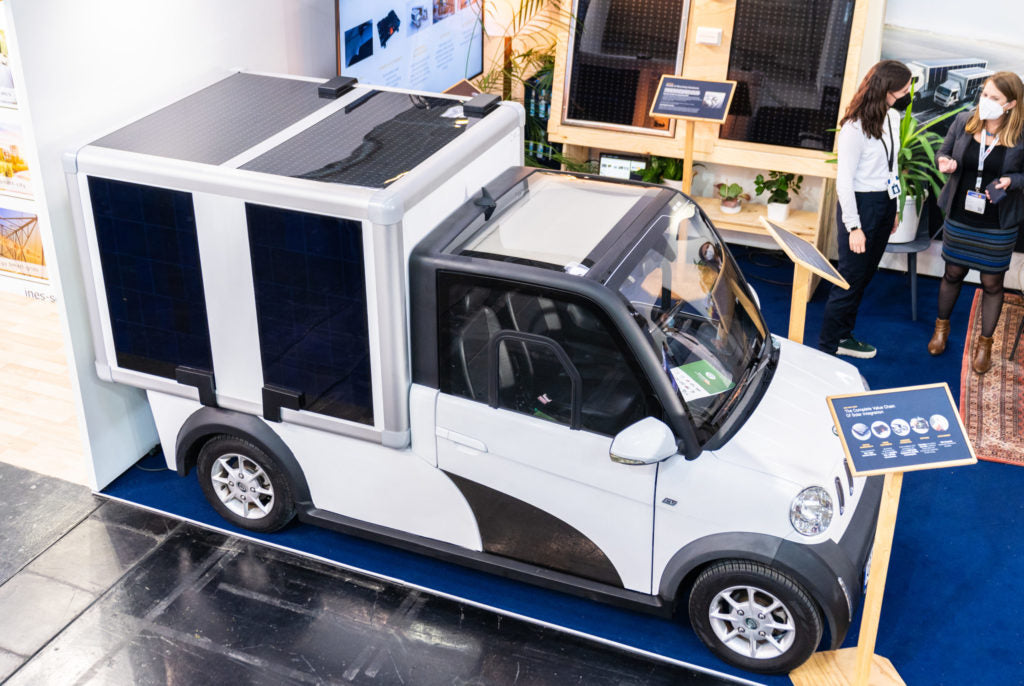https://www.pv-magazine-australia.com/2022/06/06/solar-skin-set-to-power-40-million-melbourne-office-tower/
‘Solar skin’ set to power $40 million Melbourne office tower

An artist's rendering of the Spencer Street building.
Image: Neoscape
The $40 million office tower, being constructed on a 1,043 square metre site at 550-558 Spencer Street in the Victoria capital of Melbourne will be fitted with a building integrated photovoltaic (BIPV) skin comprising almost 2,000 thin-film solar panels the same thickness as a traditional glass facade.
While the generation capacity of the BIPV system has not been revealed, Melbourne architecture firm Kennon said when complete, the array will supply almost enough power to cover all of the building’s energy needs. With extra solar panels set to be deployed on the roof, the building is expected to have almost no ongoing power costs and will be carbon-neutral after a few years.
Architect Pete Kennon said the BIPV installation will be capable of producing 50 times the energy of the average residential rooftop solar PV system and will eliminate 70 tonnes of carbon dioxide emissions each year.
Kennon said the Spencer Street building would pay off its carbon debt and “actually be carbon neutral”, without relying on offsets and other accounting measures.
“These things are possible and the fact a building can harness the sunlight from its own skin – it sounds like something you dreamed of, or you saw in a cartoon,” he said.
The Spencer Street building will be fitted with a solar skin comprising 1,182 Skala thin-film solar modules supplied by German manufacturer Avancis, a subsidiary of Chinese state-owned company China National Building Materials (CNBM).
Designed for use in ventilated curtain wall systems, the Skala panel measures 1,587mm x 664mm but Avancis said each module can be adjusted in length and mounted in either portrait or landscape mode. The copper, indium, gallium, and selenium (CIGS) product comes in power classes from 110W through to 140W with an efficiency of up to 13.3%. Using 3.2mm tempered glass, the module weight comes in at about 17kg and is available in nine colours, ranging from black and greys, through to blues, greens, gold and bronze.

Image: Neoscape
Project manager Neoscape said the Spencer Street project is the first building approved by the Victorian Building Authority to use an integrated solar facade system.
The Melbourne-based Neoscape said the design had been approved by the Building Appeals Board of Victoria after satisfying rigorous Australian Standards of Construction in safety, including comprehensive integrated fire testing of the facade system, detailed fire engineering reviews and reports, and endorsement by Fire Rescue Victoria.
“This will set a new benchmark in ESD (environmentally sustainable design) for commercial office buildings, allowing integrated solar facades on buildings across Victoria,” the company said.
The Building Appeals Board said in its compliance assessment that the thin-film modules are proposed to be deployed on all elevations of the building from level 2 to level 7.
“In most parts of Australia, the largest consumption of energy occurs in the cooling of buildings, so we designed the facade to face a solid panel north covered in the solar panel and a clear-vision glass panel south optimising the effect of the solar panel whilst minimising the heat gain through direct sunlight,” Kennon said. “This enables a maximum thermal comfort within the building using the solar to run the building with zero carbon emissions.”
Due to be completed in 2023, the Spencer Street building is among a growing number of commercial projects that are pursuing sustainable technologies and innovations as the property sector looks to play its part in Australia achieving its net zero target by 2050.
Australian property investor and developer Cbus Property has revealed plans to clad a 49-storey office tower being developed in Melbourne’s CBD with a BIPV facade capable of generating 20% of the project’s base building electricity requirements. The $1 billion project is expected to be completed in 2026.

Image: Venergy
Another Melbourne highrise is already earning plaudits for its solar system, with Verergy announcing at the weekend that Walker Corp.’s Collins Square Tower site in the city centre has been named as a finalist for the Master Electricians Australia 2022 Electrical Industry Excellence Awards.
Venergy integrated a 223kW rooftop solar system with the building’s regenerative lifts and its trigeneration of 600kW gas turbines across five commercial towers, bringing the site’s total generating capacity to 2MW.
The Adelaide-headquartered solar installer said the project has been recognised as the finalist in the categories of Energy Efficiency Project of the Year Award and Commercial Project of the Year Award.
Figures published by the United Nations Environment Program (UNEP) show buildings are responsible for 40% of the world’s carbon emissions and use approximately 40% of the world’s energy. The majority also have substantial carbon footprints, employing heavy use of fossil fuels across their lifetimes, from their construction, use, and demolition phases.
Kennon said that sustainable construction methods and a sustainable future in the built environment had been a driver behind the design of the Spencer Street building.
“We want this building to be a symbol of innovation and sustainability of how the built environment can be part of the climate solution,” he said.
This content is protected by copyright and may not be reused. If you want to cooperate with us and would like to reuse some of our content, please contact: editors@pv-magazine.com.
<




